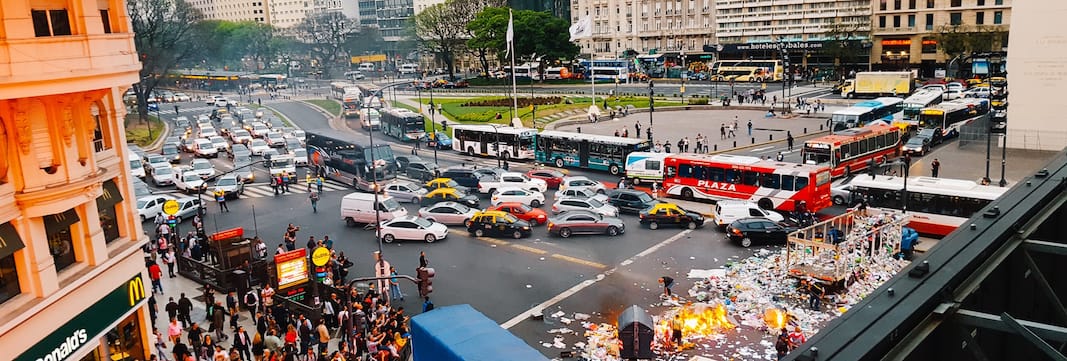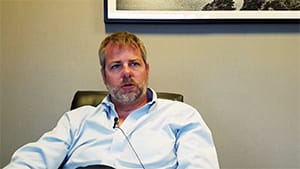Argentina
Introduction
«Argentina is the land of ’actually we should‘»In 2017, Argentina’s total population was around 44.5 million and its gross domestic product around 518 billion US dollars. According to the World Bank’s classification, Argentina is a middle-income country in the upper echelons and ranks 47th in the Human Development Index (2017). In terms of life expectancy, educational attainment and standard of living, Argentina thus ranks among the countries with very high levels of human development. A Gini coefficient of 40.6% (2017) indicates that income distribution in Argentina is more concentrated than in Central Europe. Compared with other Latin American countries, however, Argentina is one of the countries with the most moderate income concentration.
A foreign trade ratio of 19.7% in 2017 indicates Argentina’s below-average integration into international trade. In 2018, the country imported goods and services worth a good 85 billion US dollars and exported around 75 billion US dollars. The fact that Argentina has aroused below-average interest among foreign investors in recent years is illustrated by the fact that the stock of direct investments amounts to only 73 billion US dollars in 2018. This corresponds to 4% of foreign investment in Latin America.
During the twelve years of government of Néstor and Cristina Kirchner, Argentina had become increasingly isolated internationally. President Mauricio Macri, who has been in office since December 2015, is gradually trying to open up the country, which is largely economically isolated. In addition to implementing the economic reform agenda, the country also faces considerable social and ecological challenges. The Corruption Perceptions Index (CPI) of Transparency International (2019) ranks Argentina 85th. This means that corruption is perceived as widespread – also compared with other Latin American countries.

Massive human rights violations occurred in Argentina during the last military dictatorship, the consequences of which still have a strong impact on society today. In addition, Human Rights Watch (2019) points out that today’s Argentina is also confronted with human rights problems, including the abuse of police violence as well as poor prison conditions and the increasing violence against women. Furthermore, the country is accused of providing its indigenous population with inadequate access to justice, land, education, health care and other basic government services, and of failing to provide this population group with sufficient opportunities to participate in the economic development of the hinterland. According to Reporters without Borders, no journalists were killed in connection with their activities in Argentina in 2019 and the country ranks 57th out of 180 in the press freedom rankings.
90% of the population collect municipal waste (2010), but no information is available on what proportion of this waste is recycled. 99.6% of the population have access to basic drinking water services (2015). Although there are only insignificant differences between urban and rural areas in this respect, a slightly smaller proportion of the population has access to basic services in the water sector in urban areas. A large proportion of the population (98.5%) have access to a safe drinking water supply. At the same time, however, only 50% of the population is connected to the sewage collection system (2010). In 2014, CO2 emissions per capita were 4.7 tones, just below the average global per capita CO2 emissions of 5 tones, but well above the Latin American average of 3.1 tones.
In the next sections, the challenges faced by companies in Argentina in relation to human rights/working conditions, the environment and corruption are presented as examples. In addition, examples are given of how companies meet their social responsibilities in the areas described.

Human rights
«In this country you never learn the whole truth»With regard to human rights/working conditions, it should be noted that in Argentina, working conditions in Buenos Aires and the surrounding area are generally classified as humane, not least because of the comparatively strong position of the trade unions. Nevertheless, illegal workshops are repeatedly discovered here, where safety regulations and hygienic standards are disregarded and slave-like working conditions prevail. In addition, cases of child labor can still be observed in the rural regions of Argentina, e.g. in Yerba Mate production and other areas of agriculture. Child labor is prohibited in Argentina. The minimum working age is 16 years. Numerous families from the poor rural population, whose children work, do not see child labor as anything reprehensible, on the contrary, in part it is even regarded as part of the culture. The parents were child laborers themselves and now their children grow up in the same environment and have the same experiences. This traditional anchoring leads to a lack of awareness of injustice among families and the rural population.
There are numerous campaigns to raise awareness of the injustice of child labor and to help families move children away from hard physical labor and enable them to attend school. Furthermore, companies within their sphere of influence ensure that suppliers pay their employees adequate wages. This reduces the need for children to earn money. Standards and controls have been developed and enforced.


Environment
«If the others act like this, why can’t I?»Environmental protection is a central topic that companies in Argentina are confronted with when it comes to assuming corporate responsibility. There are numerous examples of companies that discharge their wastewater untreated into rivers or do not dispose of industrial waste adequately. Polluted groundwater, especially in the vicinity of major urban and industrial centers, and the decline in fish stocks and forest resources result as a consequence of this behavior.
Another issue concerns the use of water resources, which are very unevenly distributed throughout the country. While the west of Argentina has large freshwater sources, there are places with very low water availability towards the Andes Cordillera. Here, the local population competes with companies for access to water. In addition, the use of resources such as water and energy in Argentina is very inexpensive, as many prices are subsidized by the state. Many companies therefore have no financial incentive to invest in resource-conserving technologies.
Since the state infrastructure and controls in the area of environmental protection are only weakly developed, it is the responsibility of the companies to promote a conscious consumption of water and energy as well as responsible waste disposal. In many cases, multinational companies play a pioneering role in environmental protection, for example, in waste avoidance or waste separation. The resulting plastic, metal and paper waste is resold to other companies and recycled. Organic waste is composted and special incinerators are installed for industrial waste. Nevertheless, there are also good examples of environmental protection among local companies. For example, a family business has built its own sewage treatment plant for the port it operates, as the local authority responsible does not provide adequate infrastructure.


Corruption
«It takes two to tango»In Argentina, there is a general perception that corruption is widespread in both the public and private sector and that corruption is widely accepted. Lack of state control and impunity encourage corruption. In addition, inflation encourages corrupt behavior, as companies are unable to draw up proper budgets and financial figures are distorted. The same applies to erratic economic, monetary and exchange rate policies, as well as the crises that repeatedly shake the Argentine economy, as they encourage short-term thinking in companies. For companies that behave in accordance with the rules, this is often associated with considerable economic uncertainty and financial disadvantages.
In recent years, foreign companies have also been and still are involved in this network of advantage acceptances, bribes and payoffs, as they were not prepared to give up business. It is only since prosecution in the USA has been intensified that international companies have seen a certain change in behavior and are trying to bring about a positive change in their sphere of influence.
Companies use the Collective Action approach, among other things, for this purpose, as the following example shows: Port inspectors charged an informal fee for tourist ships. If the shipping companies did not pay these fees, their ships were not cleared. One company did not want to get involved and joined forces with other companies to form a Collective Action. As a result, the inspectors did not allow the ships of several companies to land. This attracted the attention of the public and the media. In response to public pressure, the inspectors decided to handle the vessels without paying the informal fee. Since then, it has no longer been necessary to pay them.

Conclusion
